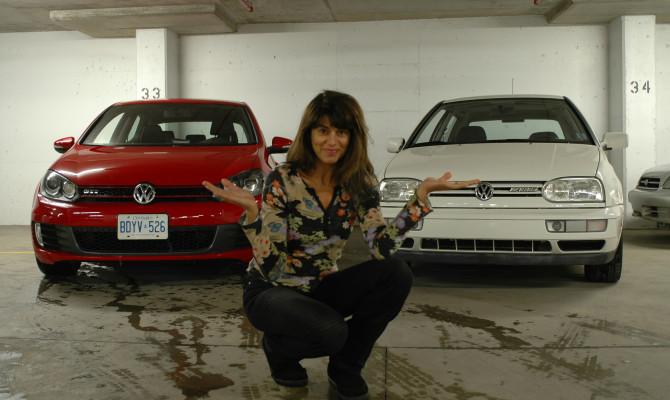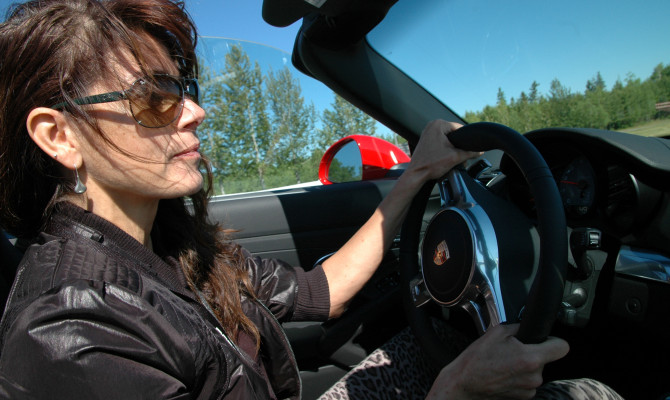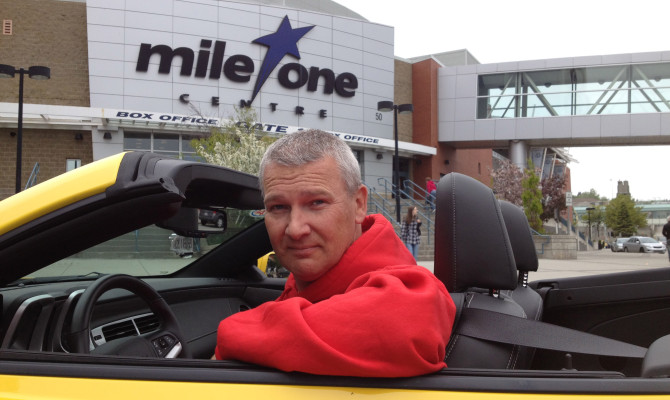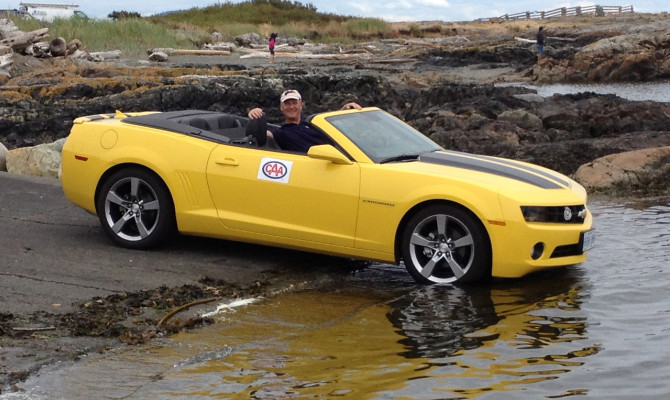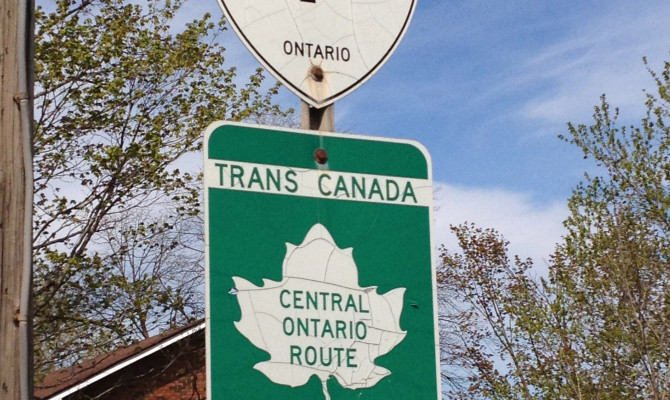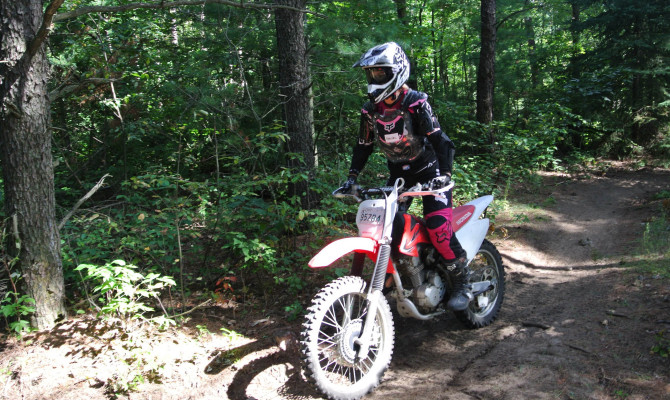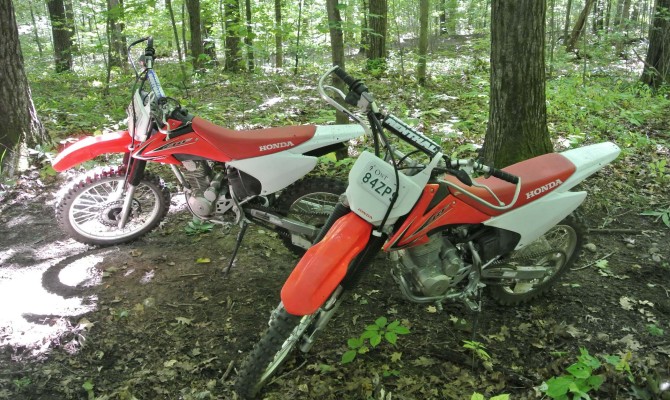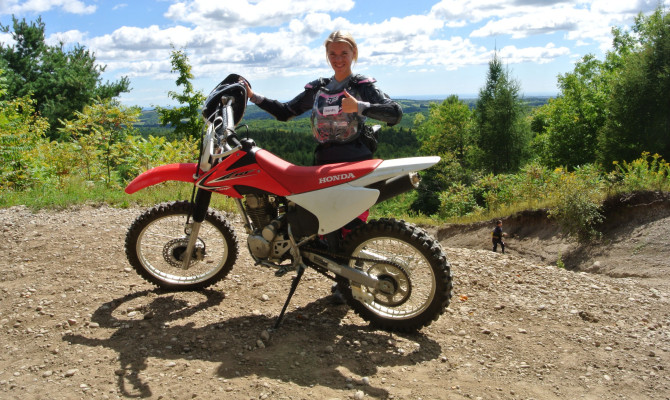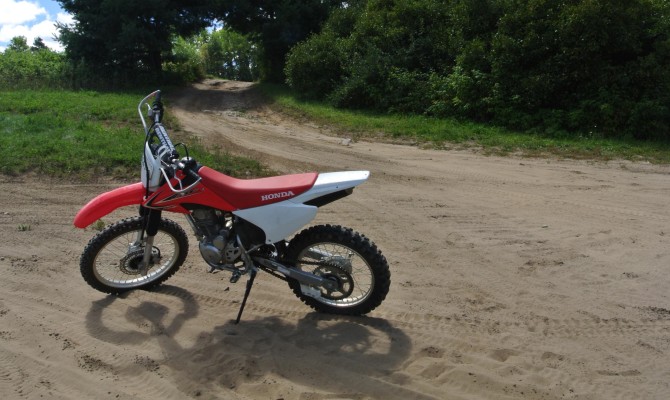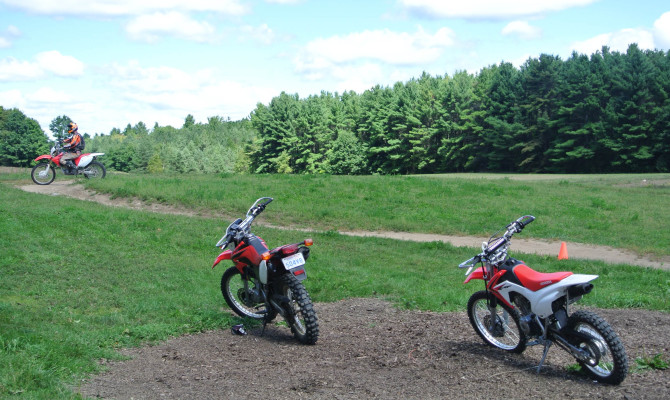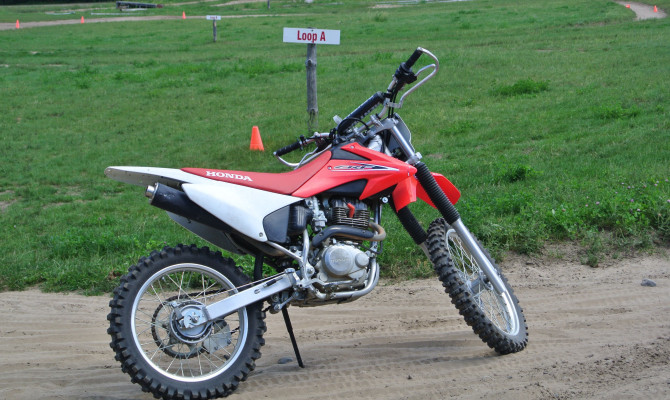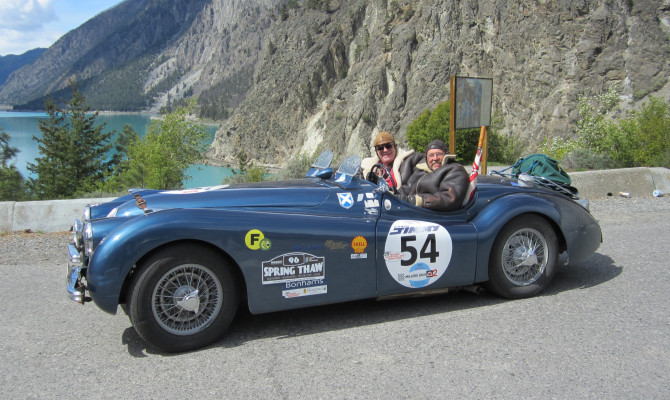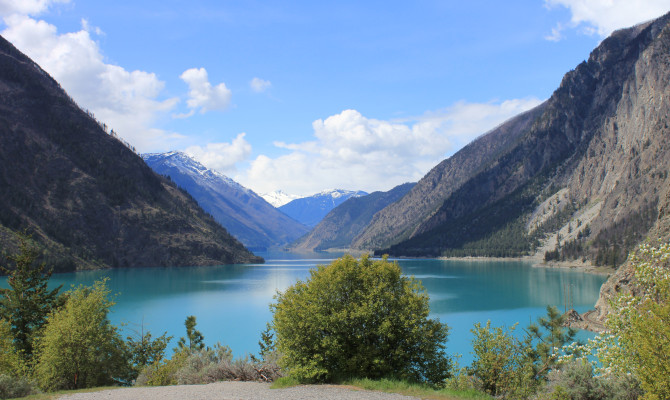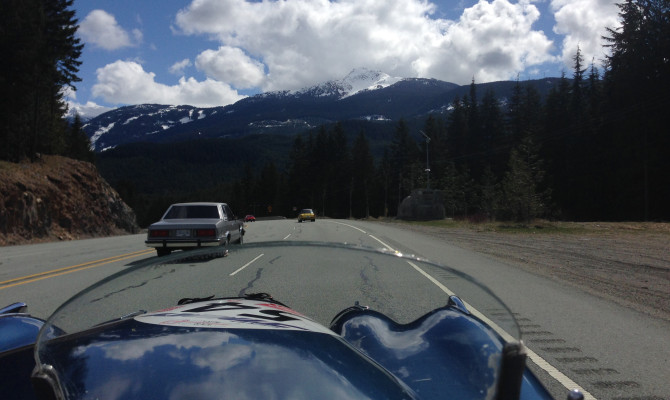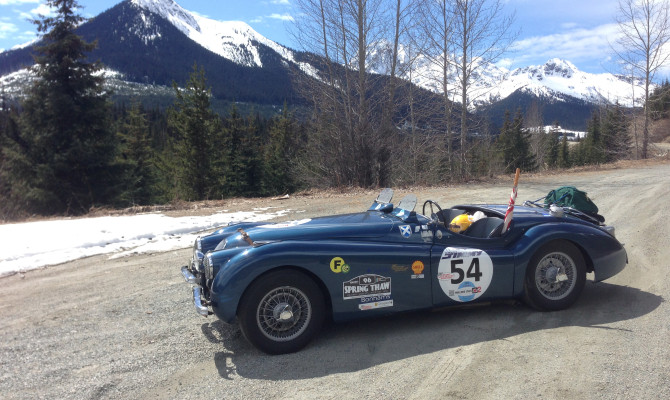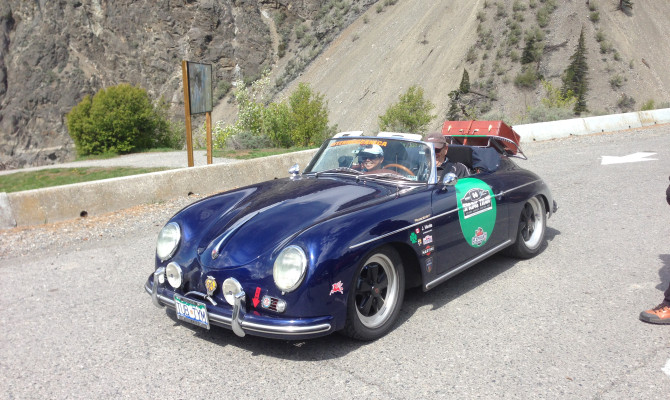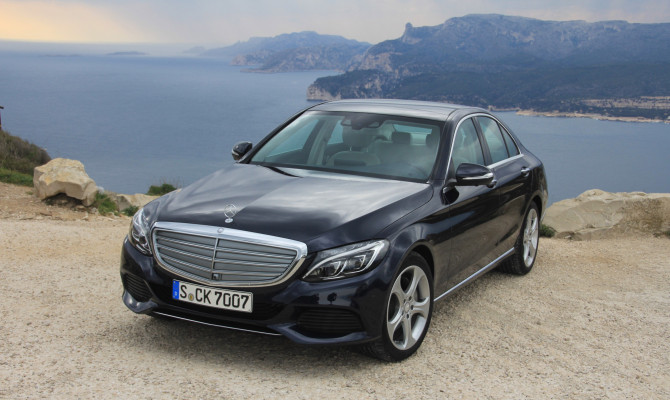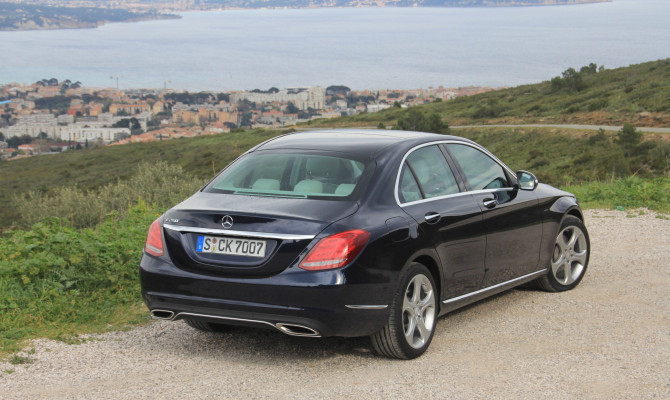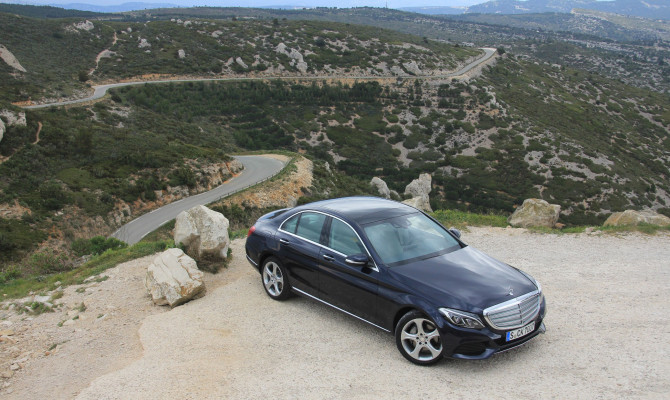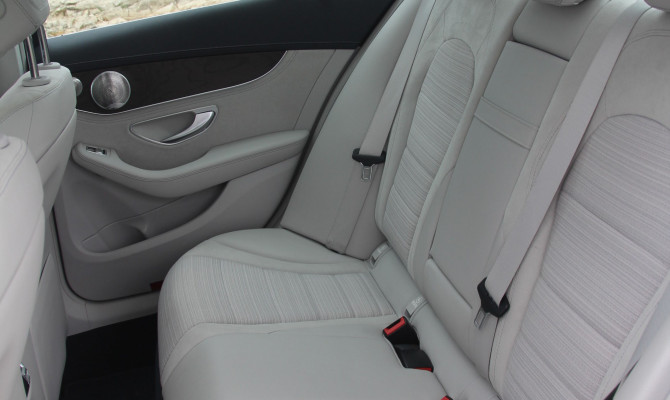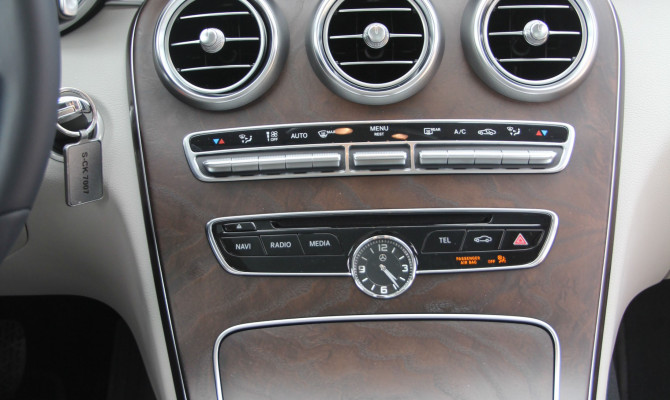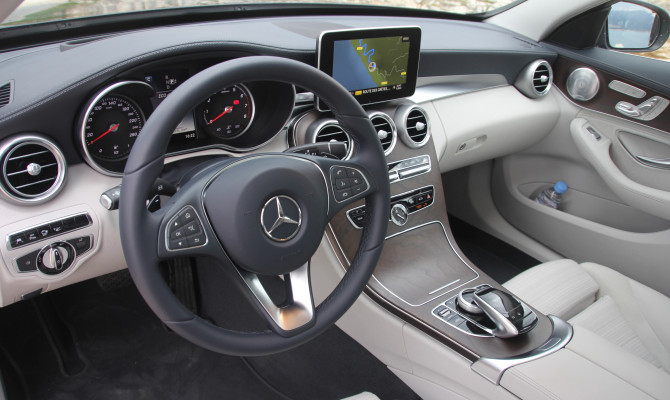“A six-day, 1,200-kilometre, road trip in an RV through some of the most spectacular scenery this province has to offer…” (more…)
“Music and road trips go together like American interstate highways and bad coffee.”
by Lisa Calvi
The first time I drove on public roads, I was at the wheel of my then-boyfriend’s Chevy Vega.
I remember cresting a hill and gasping sharply with the realization that I was in control. The curvy road splayed out far below wasn’t some carnival ride with someone else at the helm. I couldn’t just close my eyes and wait for the terror to subside. It was up to me.
I could coast down and weave gently through the corners or I could squeeze the throttle and feel the rush of acceleration and adrenaline. As a sixteen-year-old living in a small town, driving meant autonomy.
There were plenty of road trips growing up. I remember long hauls from Toronto to North Carolina and Florida with my dad driving. After he and my mom left Italy, they seemed to have an urge to see the new continent they now called home. Driving, I think, satisfied their curiosity about the world that they wanted to share with us.
When we moved back to Europe for a three-year period during my early teen years, the family would venture out each Sunday in our Peugeot 504 to discover a new region. Mom would be in the passenger seat with the maps and my baby brother asleep on her lap.
There was always music on those road trips. Music and road trips go together like American interstate highways and bad coffee. Music motivates, keeps you alert and adds to the euphoria of the open road.
Some of my fondest memories are of singing with my sister in the back seat of the Peugeot on the winding roads of Central France. Before iPads, iPhones, in-car entertainment systems and satellite radio, there were Beatles’ songs, ‘Michael, Row Your Boat Ashore’, and trying to remember all the words to ‘Bohemian Rhapsody’.
Road games involved spotting license plates from other countries, identifying makes of vehicles and fighting over whose turn it was to be a leaning post for sleeping baby brother, now in the back seat.
I’ve always been interested in cars, roads and travel. I love the growl of a revving eight-cylinder engine. A transport truck rolling down the highway at night all lit up just like a small city still gets me excited. I just never imagined that those things would be so engrained in my work and in my life. With our automotive event planning business, most days of the year, my husband Garry Sowerby and I are on the road.
It was this love of the road that brought us together. We could both relate to the words of Jack Kerouac in his classic ‘On the Road’:
“… We were leaving confusion and nonsense behind and performing our one noble function of the time, move.”
Our first date was a five-hour return drive to a ‘little spot’ my suitor knew. It must have worked. That was 17 years ago. Being ‘on the road’ is when our best scheming takes place. It’s romantic, soul-cleansing and gives us a sense of the wider world.
What about driving, though, actually gripping the wheel and pushing the throttle? Forget the destination, the freedom of movement, the road trip, the music. What is driving?
It’s that feeling that I got as I whipped a Porsche Boxster S around the tight-tight corners at a racetrack, squeezing through coned gates, powering down straight stretches and hearing the resonant instantly-recognizable growl of a Porsche engine. I had never driven faster, with such abandon yet with such intense concentration.
Or maybe I did. The 200 km/h reading on the digital speedometer of the Cadillac ATS I was driving on the back straightaway of one of the fastest, most challenging tracks in North America, Mosport, still flashes in my dreams.
None of this compares to driving my very own car, a pristine white 1999 Volkswagen Golf GTI VR6. When I bought it, I knew there were two extra cylinders under the hood than the Golf GL version and that it had an additional 57 horsepower. But when I drive it, I don’t think about horsepower, torque, or fuel economy.
Did somebody say ‘road trip’?
Follow Lisa on Twitter: @FrontLady
Driving across Canada’s is on many people’s bucket list. Respected auto journalist Mark Richardson recalls his journey along Canada’s Road.
Canada’s a big country, second only to Russia in size. The highway that links her 10 provinces is 7,700 kilometres long, and I drove it in the summer of 2012 as research for my book, Canada’s Road.
Actually, that should be “research” with wagging quote fingers, because I’m always looking for a good road trip. Road trips are usually rushed affairs, hustling somewhere to enjoy the drive but with little time to stop and enjoy the scenery, but that summer, I slowed it all down and took 10 weeks for the drive. Much better.
It helped that my ride was a 2012 Chevy Camaro convertible, supplied for the trip by General Motors. It was loaned for three months; I put almost 27,000 kilometres on it, driving back and forth and twice across the country. The only thing I needed to change on it was the oil, and it didn’t put a tire turn wrong.
That year was the highway’s 50th anniversary, opened by Prime Minister John Diefenbaker on Sept. 3, 1962. I wanted to know if our Canadian icon is still important or just something now to brag about at international cocktail parties. There are lots of roads in the world; there are plenty of highways in Canada. What makes this one so special?
It was often a surprise for people to realize the TCH is only 50 years old – it’s taken for granted these days that there’s a road leading pretty much anywhere we want to go, and the road has always been there.
In fact, it’s been just a hundred years since the very first Canadian coast-to-coast road trip, driven by two guys in an open REO. Thomas Wilby and Jack Haney took 53 days to make it from Halifax to Victoria, but there were no roads in many parts of the country; when they reached North Bay, they had to put their car on trains and boats to cross the 1,700 km to Winnipeg, and in the Rockies, they had to detour through Washington state for a while.
The final road that made it possible to drive the width of Canada was not built until 1943, a stretch of gravel from Hearst to Geraldton in northern Ontario. It wasn’t the Trans-Canada, although it became a part of it when Diefenbaker eventually declared the highway open.
That was a proud day for Canada, despite both Newfoundland and New Brunswick boycotting the ceremony at B.C.’s Rogers Pass; the two provinces were holding out for more money to finish paving and smoothing the road. The TCH really wasn’t complete until 1970, and even now, billions of construction dollars in Quebec and Alberta are widening the road into four lanes to make it safer and more efficient.
The Trans-Canada is not always such an impersonal, high-speed highway. There are still many kilometres of two- and three-lane asphalt, winding through some of the most scenic areas of the country.
We have the Rogers Pass and the Kicking Horse Pass – impossible roads through high mountains considered impassable a few generations ago. We have the Fraser Canyon, clinging to the cliffside. We have the panoramic prairie, wide and swift. And we have the north shore of Lake Superior, built expressly as a scenic route to attract international tourists. On a clear day, there is nothing to surpass driving through a deep rock cut and dropping down through the green forest toward the shoreline of the broad lake, blue in summer, white in winter.
In Quebec, the TCH unfolds as an anonymous fast highway toward the Gaspe but encourages tourists to turn onto its original route, Hwy. 132, which runs close and parallel and follows the picturesque southern shore of the St. Lawrence. And in New Brunswick, the Trans-Canada sweeps drivers beside the Saint John River and toward the coast; it crosses into both Prince Edward Island and Nova Scotia and then up to Cape Breton, becoming for a few dozen kilometres a part of the Cabot Trail.
Then over on the ferry to Newfoundland, where the highway is the only link between the island’s west and east, just as it is on the other side of the country; in British Columbia, it’s the only paved link on Vancouver Island to Victoria, at the other end of another ferry.
The Trans-Canada Highway may not be the most efficient road in the world, and it still has a few dangerous twists and turns, but yes, it’s still important and it makes a great road trip, however long you’re able to take for the journey.
It’s a true Canadian compromise: a bit of everything for everyone – beauty, industry, and practicality – that pushes through our differences to link the country.
Mark Richardson’s book, Canada’s Road: A journey on the Trans-Canada Highway from St. John’s to Victoria, is published by the Dundurn Press.
“As we traverse the topography, it’s almost as though one of the Norse gods, or trolls, is looking over us from above and shaking a sifter of powdered sugar.”
(more…)
Ganaraska Forest, Ontario.
“Remember, the trees don’t move,” coaches Al Lakas, chief instructor at Trail Tours.
These words offer some solace but little consolation to the confines of singe-track riding.
Claustrophobia is not a regularly referenced noun in my vocabulary, but when the local fauna and flora of the Ganaraska Forest are a hair’s length from your body, and the trail is inches wider than the handlebars of your bike, it’s hard to ignore.
The Medusa-like temptation to fixate on upcoming vegetation must be overcome. If you do happen to focus on them, it could be game over.
“Oh, shoot, there’s a stum…”
Thud.
There goes the front end of your bike, and probably you.
If you look down, your handlebars might do a jig-like dance, and chances are, that’s where you end up. Down.
Breathing through the anxiety is one way of conquering the trails. Another is a strong foundation in riding. But the most important of them all: vision.
Before heading out onto the over 300 kilometres of trails nestled within the 11,000 acres of Ganaraska Forest, Trail Tours instructor Al gives my riding partner and I a lesson in a much less confining location.
Thank goodness.
Nestled in the heart of the seemingly limitless dirt biking and motorized vehicle playground is Trail Tours (www.trailtour.com.) It’s just over an hour’s drive east from Toronto and well worth the short-haul journey. After parking the car and walking a few paces through a trail, the world gets a little brighter. Literally and metaphorically.
The sinewy trees – well, in comparison to west coast wood – that lead us to home base doesn’t let in a ton of light, so at the end of the trail, where Trail Tour’s open field training facility stands before me, the sun overflows like a perfectly-iced cake (you can never have too much icing.)
Also, I’m going dirt biking. How could that not brighten your day?
Whether you’re a first timer or an experienced rider, they have a program for you.
Though this wasn’t my first rodeo in terms of dirt riding, it was in regards to single-track.
I could use all the tips and tricks I could get.
Furthermore, I could always use a little more practice riding in the sand. Yikes.
Day 1 of the two-day adventure consisted of making sure the techniques for single-track riding were fresh in our minds.
It’s best just to ignore the trees or whatever hazards engulf you and the bike. Acknowledge them, but don’t stare. Otherwise, your fate will likely be sealed.
After practicing in the various loops – there are different areas of their facility that cater to different techniques – it was off to the practice trail.
Needless to say, I was not setting any speed records but it wasn’t about speed. That comes with time and experience. It was getting used to the fact that I didn’t have a lot of wiggle room and that my mind would want to play tricks on me if I didn’t relax, let the bike and myself breathe, and enjoy the best that machine and Mother Nature have to offer.
Day 2 was a game changer.
I was so happy that I did some basic skills the day before because I embraced the various tones and textures of the perpetually evolving geography around me.
Rocks, gravel, soil, sand (oh, there was a lot of sand), steep inclines, tree stumps, sharp corners, you name it, the Ganaraska Forest has it.
Though I didn’t go at it alone. Groups were organized by skill level and were lead by individuals who know that forest like the back of their hand. Heck, I would have been lost after the first two turns.
If you found that throughout the day you wanted a more advanced riding, or wanted to take it easier, movement between groups was entirely possible. The name of the game there is safety, with fun at an extremely close second.
Challenging yourself, your mind, your body and the bike is all part of the package.
And what an incredible way to do it.
Trail Tours is open from May until the end of October.
Visit www.trailtour.com for more information.
The destination: Budapest, Hungary… in a bright-red, brand-new Audi A3…
Only mad dogs and Englishmen drive open top cars in the extremely chilly B.C. high country at this time of year. (more…)
Superbly engineered, technically sophisticated and pleasure to drive…
Marseille, France.
The mid-sized C-Class is the most popular and affordable Mercedes-Benz sedan and about 8.5 million of them have been produced, since it was originally introduced in 1993.
Mercedes engineering typically operates on a seven-year “circle of life” production run and an all-new generation of C-Class will arrive in Canada, as a 2015 model year vehicle, this summer.
In brief, it’s a bigger and better C-Class, however, real progress is in the details. This C-Class is lighter, safer, comes with a choice of two more powerful (yet more fuel-efficient) new engines, uses even more advanced technologies, plus its body is more aerodynamic and, to my eyes, better looking. The South of France global launch location, even though I had to share it with over 800 other auto hacks, was another nice bonus – more later…
There’s no pricing available at this time, but we do know the initial trim levels offered in Canada will be a C300 and a C400. A sporty AMG edition, called the C63, will also be added to the line in January 2015. Although not official, a diesel edition is also expected to be added in 2015. At this event Mercedes was also showing a Euro-destined hybrid-diesel edition.
An optional (Airmatic) air suspension is offered for the first time in C-Class. It allows a driver to choose between Comfort, Eco, Sport, and Sport+ settings via an Agility Select switch on the console. The 4MATIC all-wheel drive system is, as before, the other major option. Also available is a Sport Package that includes AMG trim upgrades, wheels and front brake system.
The C-class has classic rear-drive vehicle proportions with a long hood (with a choice of two front grilles) and a short rear deck. It looks like a smaller version of the top-line, and redesigned last year, S-class, especially the new LED headlights and taillights. Compared to the current C-Class it’s longer, lower and wider and is now close in size to a 90s E-Class. Its extended wheelbase also helps create more interior space, especially for rear seat passengers.
The big change under-hood is a four-cylinder turbocharged 2.0-litre, in the C300, that’s max rated at 235 horsepower and 273 lb-ft of torque. While it produces more power than the outgoing base V6, I found the initial power surge, when you push on the gas pedal, overly aggressive. In fairness, the North American edition will come with different throttle mapping.
The twin-turbocharged 3.0-litre V6 in the C400, on the other hand, is a beauty. It can pump-out up to 329 horsepower and 354 lb-ft of torque. More importantly, it does so in a quieter, smoother and effortless fashion that most drivers expect when at the wheel of a Mercedes. Both engines come with idle fuel saving start/stop systems and are mated to a 7-speed automatic transmission.
The list of standard and available high-tech active safety features is simply amazing. It includes almost everything that’s available in the top-line S-Class, which is touted as the world’s safest car. Intelligent Drive is an optional suite of technologies that includes autonomous braking with pedestrian recognition, a low-speed heavy traffic auto-pilot feature, active parking assist and a 360-degree camera setup with numerous views of immediate surroundings.
Bordering on frivolous, there’s an Air-Balance in-car perfuming system … to prolong that new-car Mercedes smell. Another one is a GPS-linked climate-control system tech feature that automatically switches it to “recirculation” mode when a C-Class is driven into a tunnel.
The test drive actually did include a few tunnels and there are lots of them in and under Marseille. It’s the second largest city in France and its busiest port with numerous ferries to other Mediterranean destinations.
Our drive route took us out of the city on a circular mostly rural route around the outskirts of Marseille and ended at the picturesque small harbor community of Cassis. A mountain drive along the Route des Cretes (Route of the Ridges) was spectacular. It’s a narrow, winding high-elevation road with pull-offs at numerous view locations.
Even with the (100 kg) weight reduction, this C-Class is sublimely stable on the road. The switch to a full electronic assist rack and pinion steering system, called Direct Steer, is also flawless. There are fuel economy and active safety benefits.
Inside the seating is typical Mercedes with easy to find power controls on the door panel. Generous in size, yet excellent support and a good range of adjustable elements didn’t give my weak back a reason to complain, even after many hours of driving.
The restyled dash is an elegant and less fussy design, thanks mainly to a new Touchpad controller that eliminates a multitude of switches. It can recognise both single and multi-finger gestures, wiping movements, zoom finger gestures, even user handwriting.
That said, the stand-alone display screen looks out of place, as if an afterthought I-Pad was attached to the dash.
Overall, this C-Class is sure to please both purists and newcomers. Superbly engineered, technically sophisticated and pleasure to drive.
Recent Comments
- { Enjoyed your Forest of Bowland in the BMW X5M, particularly the photo of the BMW in front of the main part of Stonyhurst College where... }
- { Bantam designed the Jeep, not Willy's or Ford. The American military gave the original Bantam prototype to Willys and Ford to copy. There is plenty... }
- { All Escalades come with a 6.2-lilter V8 engine that produces 420 horsepower. A six-speed automatic is the only transmission offered and drives the rear wheels.... }
- { Alexandra is an excellent journalist. }
Popular Posts
- Journey to a ‘Sparkling’ Luxury Okanagan Resort “Four lucky readers will put a Dodge Journey’s weekend-...
- The Need For Speed: Hike Those Highway Limits More than half of those polled believe the province sho...
- Drives-U-Crazy… Erratic drivers. An early morning drive from Kelowna to Vancouver is nor...
- Readers Respond: The Pros and Cons of Increasing B.C. Speed Limits Increasing the speed limits will only increase risk to...
- Honda CR-V Review: The Compact Crossover To Get Things Done The CRV is a very stylish and aerodynamic crossover veh...


